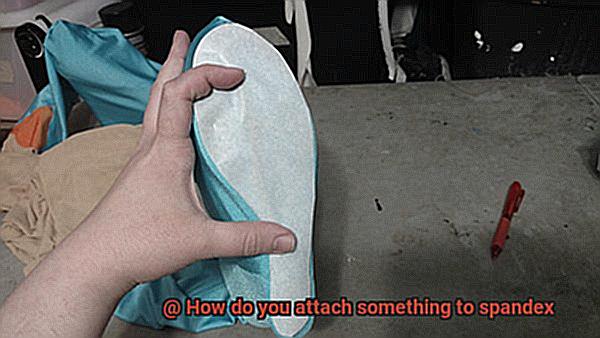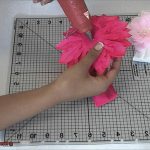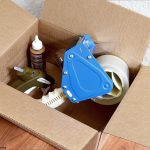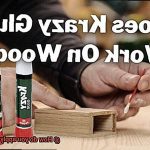Spandex, the superhero of fabrics, has revolutionized fashion, sports, and cosplay with its unparalleled stretch and form-fitting magic. But when it comes to attaching something securely to this sleek material, it can leave even the most skilled DIYers scratching their heads. Fear not, my fellow creators. In this engaging guide, we’ll dive into the art of attaching items to spandex, ensuring your projects are flawlessly fused together.
Whether you’re a fashionista looking to accessorize your spandex-based ensemble or a designer seeking innovative ways to elevate your creations, understanding the techniques and materials required is key. We’ll explore methods that cater to both casual crafters and seasoned pros who demand nothing but perfection.
Sewing:
Contents
- 1 Cleaning the Surface for Adhesive Application
- 2 Using Fabric Glue to Attach Items to Spandex
- 3 Sewing as an Alternative Method of Attachment
- 4 Utilizing Safety Pins and Clips for Temporary Attachments
- 5 Using Specialized Tools and Attachments for Buttons and Snaps
- 6 Considering Stretch and Flexibility When Attaching Items
- 7 Experimenting with Different Methods of Attachment
- 8 Tips for Securing Items Properly on Spandex
- 9 Conclusion
Ah, the timeless art of sewing. This tried-and-true technique remains one of the most effective and durable ways to attach items to spandex. Whether you prefer the precision of a sewing machine or enjoy the meditative rhythm of hand sewing, we’ve got you covered. From choosing the perfect thread and needle types to mastering stitching techniques that guarantee optimal results – we’ll guide you through every step.
Adhesive Options:
Sometimes we crave a temporary fling rather than a long-term commitment. That’s where adhesive options come into play. Fabric glue, heat bond tape, and fusible webbing offer practical alternatives for those seeking semi-permanent attachments. We’ll delve into each option’s pros and cons so you can select the ideal adhesive for your project. And fear not – we have tips up our sleeve for maximizing durability too.
Velcro and Snaps:
Detachability is all the rage these days – think detachable sleeves or closures that adapt with your mood (or outfit). Enter Velcro and snaps. These nifty fastening solutions provide a secure yet detachable option for your spandex creations. We’ll spill the beans on proper placement, stitching techniques, and the types of Velcro or snaps that work like a dream on spandex.
Grommets and Rivets:
When it comes to heavy-duty attachments like metal rings or studs, grommets and rivets are here to save the day. We’ll guide you through creating reinforced holes, installing grommets with confidence, and setting rivets without compromising your precious spandex fabric’s integrity. Get ready to add some serious edge
Cleaning the Surface for Adhesive Application
Spandex, with its stretchy and smooth texture, presents unique challenges when it comes to adhesive application. To ensure a strong and durable bond, proper cleaning of the surface is essential. In this article, we will guide you through the step-by-step process of cleaning spandex surfaces for optimal adhesion.
Step 1: Remove Loose Dirt and Debris
Gently brush off any loose dirt or debris using a soft-bristled brush or clean cloth. Avoid scrubbing too hard to prevent fabric damage.
Step 2: Prepare a Soapy Solution
Fill a basin or sink with lukewarm water and add mild detergent. Swish the water gently to create suds.
Step 3: Soak and Agitate
Immerse the spandex garment or fabric in the soapy water and let it soak for a few minutes. Gently agitate the fabric with your hands to loosen dirt or grime.
Step 4: Rinse Thoroughly
After soaking, remove the spandex from the water and rinse it thoroughly under running water. Ensure all traces of detergent are rinsed out, as residue can interfere with adhesive bonding.
Step 5: Spot Clean Stubborn Stains
For stubborn stains, apply a small amount of gentle stain remover or laundry detergent directly onto the stain. Gently rub with your fingers or a soft cloth, then rinse thoroughly.
Step 6: Squeeze and Roll
Gently squeeze out excess water from the spandex without wringing or twisting it. Lay it flat on a clean towel and roll it up to absorb more moisture. Avoid using heat to dry spandex, as high temperatures can compromise elasticity.
Step 7: Allow Air Drying
Let the spandex air dry completely before attempting to attach anything with adhesive. This ensures no moisture is present, which can affect adhesive effectiveness.
Step 8: Patch Test
Before applying adhesive to the spandex, do a patch test on a small, inconspicuous area of the fabric. This helps determine compatibility and prevents damage or discoloration.
Using Fabric Glue to Attach Items to Spandex
We have the perfect solution for you – fabric glue. Fabric glue is not only convenient but also an effective way to attach items to spandex. However, to achieve optimal results, it’s important to use the right techniques.
First and foremost, selecting the right fabric glue is crucial. Look for a glue specifically designed for stretchy fabrics like spandex. You want a glue that will provide a strong bond without compromising the flexibility of the fabric. So, be sure to carefully read the label and look for mentions of spandex or stretchy fabrics.
Preparation is key before applying the glue. Make sure your spandex fabric is squeaky clean. Gently brush off any loose particles or dirt that may be present. For stubborn stains, spot clean with a mild detergent and water. Once clean, allow the fabric to air dry completely before moving on.
To improve adhesion, you can lightly sand or roughen the surface of the spandex fabric using fine-grit sandpaper. This slight abrasion will provide a better surface for the glue to grip onto, increasing its effectiveness.
When it’s time to apply the glue, remember that less is more. Apply it sparingly to the specific area where you want to attach the item. Using too much glue may cause it to seep through the fabric or create a stiff spot, which is definitely not what we want.
Now, let’s talk about patience. Once you’ve applied the glue, allow it to dry according to the manufacturer’s instructions. Typically, this process takes a few hours, but it can vary depending on the specific brand you’re using. During this drying period, resist the temptation to touch or disturb the glued area. Patience will ensure a strong bond that lasts.
Once the glue has fully dried, it’s time to firmly press the item onto the glued area of the spandex fabric. Give it a good hold for a few seconds to ensure a secure bond. For extra security, consider reinforcing the attachment by sewing around the edges of the attached item with a needle and thread. This additional step can be particularly helpful for items that may undergo stress or movement, providing extra peace of mind.
It’s important to note that while fabric glue is a fantastic temporary solution, it may not be as durable as sewing or other methods of attachment. Depending on the weight and strain put on the attached item, the glue may weaken or fail over time. If you need a long-lasting attachment, sewing may be a better option.
Lastly, always read and follow the instructions provided by the fabric glue manufacturer to ensure proper usage and safety precautions. This will help you achieve the best results and keep you safe throughout the process.
Sewing as an Alternative Method of Attachment
Sewing is not only a reliable method of attachment but also offers numerous advantages when working with spandex fabric. By selecting the right needle, thread, and stitch, you can achieve professional-looking results that are durable and able to withstand the test of time.
One of the key elements to consider when sewing on spandex is the needle. Using a stretch or ballpoint needle specifically designed for this fabric is crucial. These needles effortlessly penetrate the spandex without causing any tears or holes, resulting in a smooth and professional finish.
Equally important is the choice of thread. Polyester or nylon threads are highly recommended for sewing on spandex due to their stretchability and durability. These threads can withstand the constant stretching and movement of the fabric, ensuring that your stitches remain intact.
In terms of stitches, it is essential to use a stretch stitch or a zigzag stitch when attaching items to spandex. These stitches allow the fabric to stretch without breaking the thread, providing flexibility and maintaining the integrity of your attachment even during movement.
Before diving into your sewing project, it is always wise to conduct a test stitch on a scrap piece of fabric. This will help you ensure that the stitch stretches properly and allows for any adjustments needed to avoid puckering or distortion.
When sewing on spandex using a sewing machine, using pins or clips is essential to hold the fabric in place. This prevents any shifting or slipping while you sew, enabling precise and accurate stitching.
To enhance strength and durability, it is advisable to backstitch at the beginning and end of your seam. Additionally, reinforcing any stress points with additional stitching will further secure your attachment.
For smaller projects or delicate fabrics, hand sewing can be an excellent alternative method of attachment. When hand sewing on spandex, use a small needle and a strong, fine thread to delicately stitch your desired item or trim without pulling or stretching the fabric excessively.
To ensure accurate placement and prevent mistakes while sewing, marking the placement of the item or trim on the spandex using tailor’s chalk or disappearing ink is highly recommended.
Utilizing Safety Pins and Clips for Temporary Attachments
When it comes to attaching items to spandex fabric temporarily, safety pins and clips are the trusty sidekicks you need. They offer flexibility, convenience, and versatility without causing any permanent damage. In this blog post, we will explore the advantages and disadvantages of utilizing safety pins and clips for temporary attachments on spandex fabric.
Advantages of Safety Pins:
- Easy to use: Safety pins are simple and straightforward. Just position the item, insert the pin through both layers of fabric, and securely close it.
- Lightweight attachments: Perfect for badges, patches, or small accessories on spandex garments.
- Temporary adjustments: Gather excess fabric or create pleats for a temporary fit adjustment.
Advantages of Clips:
- Secure hold: Clips provide a more secure hold than safety pins, making them suitable for heavier or bulkier items on spandex fabric.
- Versatility: Available in various sizes and designs, allowing you to choose the best option for your attachment needs.
- No sharp points: Clips eliminate the risk of accidentally poking or damaging the fabric.
Disadvantages:
- Distortion or stretching: Large or heavy attachments may cause some distortion or stretching if left attached for an extended period.
- Discomfort or irritation: Avoid placing safety pins or clips in areas that may cause discomfort or irritation to the wearer’s skin.
- Temporary solution: Safety pins and clips are temporary solutions and may not be suitable for long-term use or heavy-duty applications.
Using Specialized Tools and Attachments for Buttons and Snaps
Attaching buttons and snaps to spandex fabric requires precision and care to ensure a secure and professional finish.
Specialized tools and attachments play a crucial role in achieving this goal, providing the necessary support without causing any damage to the delicate material.
This article explores the power of these tools and how they can be effectively utilized for successful attachments on spandex fabric.
The Power of Specialized Tools:
- Button Press Machine: The primary tool for attaching buttons and snaps, a button press machine applies pressure evenly and precisely. This ensures a secure attachment without causing any tears or distortions in the fabric. The machine’s adjustable settings make it versatile for different sizes of buttons and snaps.
- Button Dies and Snap Dies: Essential attachments for the button press machine, these specialized dies ensure accurate placement and attachment. By securely fitting into the machine, they maintain alignment and prevent any misplacement during the attachment process.
Types of Glue:
While specialized tools are preferred, there are instances where glue may be necessary for attaching buttons and snaps to spandex fabric. Follow these guidelines for using glue effectively:

- Choose Appropriate Glue: Select fabric glue or adhesive specifically designed for stretchy materials. These glues provide a strong bond while maintaining flexibility.
- Follow Application Instructions: Adhere to the manufacturer’s instructions regarding application techniques, drying times, and any other specific guidelines provided.
Best Practices for Application:
To achieve secure attachments on spandex fabric, consider the following best practices:
- Placement: Carefully position buttons and snaps to ensure proper alignment when fastened. This not only enhances the appearance but also ensures functionality.
- Backing or Reinforcement Material: Use a backing or reinforcement material to distribute pressure evenly across the fabric when attaching buttons. Interfacing or fusible webbing can be ironed onto the backside of the fabric for added support, preventing stretching or distortion.
Tips for Achieving a Secure Hold:
- Test on Scrap Fabric: Prior to attaching buttons or snaps to your spandex garment, test the tools and attachments on a scrap piece of fabric. This allows you to determine the appropriate settings and pressure required for a secure attachment without causing any damage.
- Choose the Right Snaps: Select plastic snaps for lightweight flexibility or metal snaps with additional reinforcement to prevent tearing or damaging the fabric.
- Follow Manufacturer’s Instructions: Adhere to the manufacturer’s instructions for both the spandex fabric and the specialized tools being used. Each fabric and tool may have specific guidelines to ensure successful attachment and longevity of the garment.
Considering Stretch and Flexibility When Attaching Items
When it comes to attaching items to spandex, it’s crucial to consider the fabric’s stretch and flexibility. Spandex is famous for its ability to stretch and bounce back, so any attachment method must accommodate this without damaging the fabric. That’s where glue comes in.
Not all adhesives are suitable for spandex. Some can make the fabric stiff or even ruin it completely. That’s why it’s essential to choose an adhesive specifically designed for use with stretchy fabrics. Fabric adhesives or fabric glues are the way to go. These adhesives bond with the fabric fibers without compromising its flexibility.
But what about heavier or bulkier items? Fear not. There are reinforcement techniques that can provide the extra support needed. Adding interfacing or extra layers of fabric in the attachment area can distribute the weight evenly, preventing strain on one specific area.
When attaching items near high movement or tension areas like joints or seams, it’s important to consider extra reinforcement or a more secure attachment method. This ensures that your attachment stays put no matter how much you move.
Before committing to any attachment method, it’s always a good idea to test it on a small, inconspicuous area of the spandex fabric. This way, you can evaluate the adhesive’s compatibility with the fabric and its ability to withstand the fabric’s stretch and flexibility.
Experimenting with Different Methods of Attachment
Spandex fabric, with its unparalleled stretch and versatility, demands a special touch when it comes to attaching something to its surface. Whether you’re seeking to add embellishments, secure accessories, or create unique designs, finding the perfect attachment method is paramount. In this article, we will embark on a captivating journey through the realm of attachment for spandex fabric. We will delve into various methods that promise seamless integration and discuss their advantages, disadvantages, and why glue has emerged as a popular choice.
Sewing: A Tapestry of Reliability
Sewing stands as the eternal guardian of attachment methods for spandex fabric. This time-honored technique intertwines threads with precision, offering a secure bond while maintaining the material’s flexible nature. However, like faint whispers in a bustling crowd, visible stitches can leave their mark on those seeking a seamless appearance. Furthermore, navigating intricate designs can transform this reliable method into a time-consuming endeavor.
Gluing: Where Speed Meets Elegance
Enter the realm of gluing—an enchanting fusion of expediency and elegance that has captured the hearts of spandex aficionados. Specially formulated fabric glues weave their magic, ensuring a strong bond without sacrificing the fabric’s inherent flexibility. With no visible stitches to mar its flawless surface, gluing becomes the whisper-soft breeze that swiftly transforms visions into reality. Yet, like all delicate enchantments, it may not possess the longevity and endurance of its sewing counterpart.
Heat Bonding: The Forge of Strength and Precision
Step into the fiery realm of heat bonding, where strength meets precision in a mesmerizing dance. Armed with tools such as heat presses and temperature-controlled irons, this method harnesses the power of heat and pressure to forge an unyielding union between adhesive and spandex fabric. This technique delivers a robust attachment, shrouded in the mystery of invisibility, with no visible stitches to disrupt its seamless allure. However, traversing this path demands deft control of temperature to protect the delicate spandex material from the ravages of scorching heat.
Adhesive Tapes: A Transient Embrace
In this realm, we encounter adhesive tapes designed exclusively for fabrics, offering a fleeting yet tender embrace for spandex fabric. These double-sided tapes provide an ephemeral solution, perfect for temporary use or lightweight adornments. However, their grasp may falter under the weight of long-term or heavy-duty demands. Thus, the choice of tape becomes a delicate dance—a balance between strength and discretion, ensuring secure attachment without leaving a trace.
Conclusion:
Tips for Securing Items Properly on Spandex
Spandex, a stretchy fabric that is commonly used in dance costumes and activewear, requires special care when attaching items to it. Whether you’re embellishing a costume or adding accessories, the key is to ensure a secure and long-lasting hold. In this comprehensive guide, we will explore various methods, including glue and other techniques, for securing items properly on spandex.
Glue it Right:
Choosing the right adhesive is crucial when attaching items to spandex. Opt for fabric glue or adhesive tapes specifically designed for stretchy fabrics like spandex. These adhesives are flexible, ensuring a secure bond without compromising the fabric’s stretchiness. It’s important to carefully read the instructions and follow them accordingly to achieve the best results.
Cleanliness is Key:
Before attaching anything to spandex, ensure that the surface is thoroughly clean. Dirt and residue can prevent the adhesive from sticking properly. Gently wash the area with mild detergent or fabric cleaner, then allow it to dry completely before proceeding. A pristine surface will optimize the bonding process.
Test before Committing:
Always perform a test patch before permanently attaching something to spandex. Apply a small amount of adhesive or tape to a discreet area of the fabric and let it dry. This step allows you to check if the adhesive adheres well without causing any damage or discoloration. If there are any concerns, consider trying a different adhesive or tape.
Thin Layers for Strong Holds:
When using adhesive, remember that thin layers yield stronger holds than one thick layer. Apply a thin layer of adhesive to both the item and the spandex fabric, press them together firmly, and hold for a few seconds to ensure proper bonding. This technique ensures better adhesion and reduces the chances of the item coming loose.
Reinforce for Security:
For heavy or bulky items, additional reinforcements may be necessary to secure them properly on spandex. Consider using small stitches or sewing the item onto the fabric for added security. This prevents the item from coming loose during movement and provides extra peace of mind. Reinforcing the attachment points is especially crucial to prevent tearing or excessive stretching.
Allow for Drying Time:
After attaching an item to spandex, it’s essential to allow sufficient drying time before wearing or using the garment. Follow the instructions on the adhesive or tape regarding drying times. Avoid stretching or putting pressure on the attached item until it has fully dried and cured. Patience in this step ensures a strong and lasting bond.
hVH0ZlSvM0Q” >
Conclusion
When it comes to attaching something to spandex, there are a few key methods you can rely on.
One option is using sewing techniques such as hand stitching or machine stitching. This allows for a secure and durable attachment that won’t easily come undone.
Another approach is using adhesive products specifically designed for spandex, like fabric glue or double-sided tape. These options provide a quick and easy solution, but may not be as long-lasting as sewing.
Whichever method you choose, it’s important to test it on a small inconspicuous area of the spandex first to ensure it doesn’t cause any damage or discoloration.






